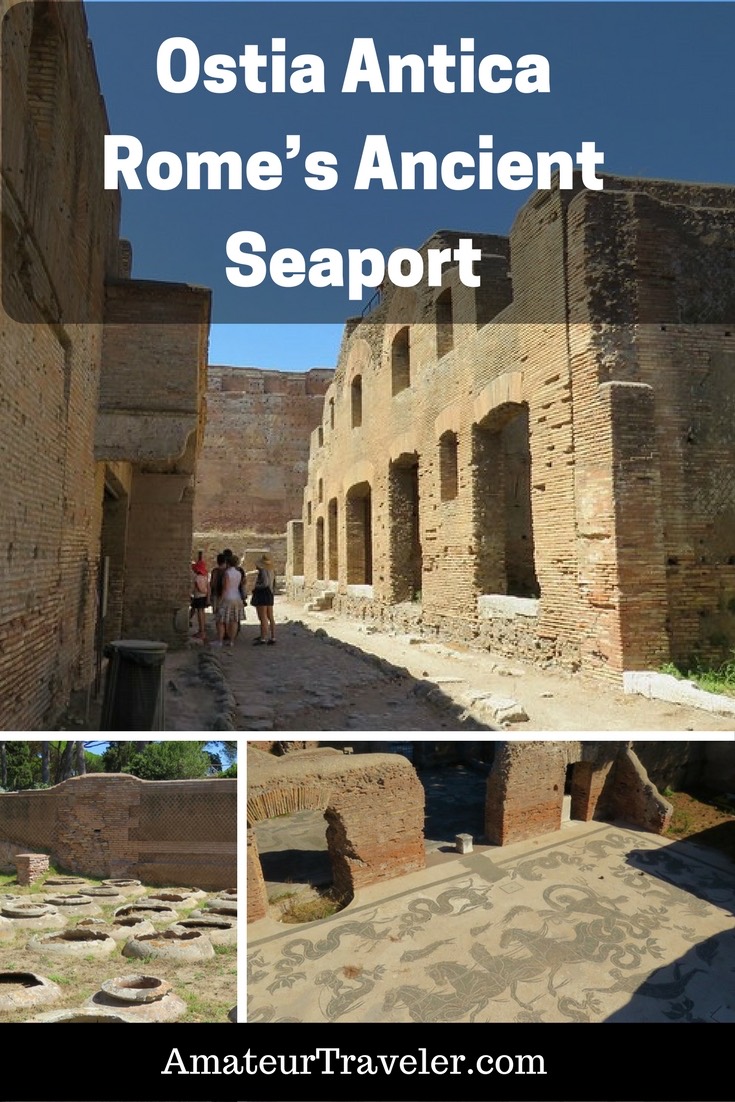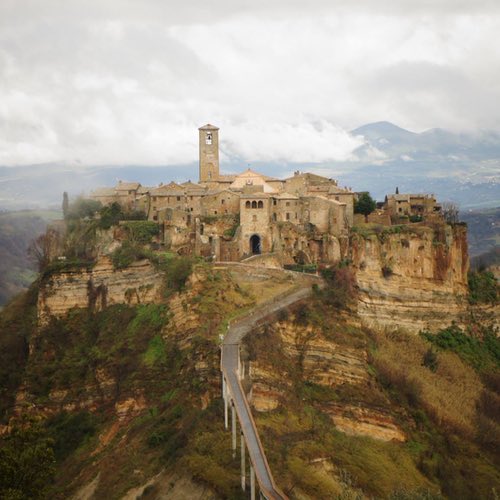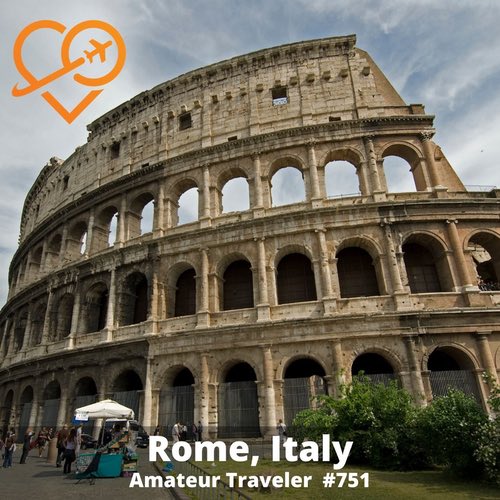While the Roman ruins in the heart of Rome like the Colosseum and the Forum may be packed with tourists, a ride out of the city can lead you to some of the best-preserved ruins in the area, the ancient port of Ostia Antica.
I was fortunate enough to get invited on an Ostia Antica Tour with a guide from Context Travel. Context Travel is a small group tour company (no more than 6 people) that focuses on travel for curious people. They specialize in tours with experts.
I met my guide, Janet Cavallero, at the Pyramid Metro station where we hopped on a train to ride the 30 minutes it would take to get out to Ostia Antica.
Along the way we passed the Exposition grounds and model city that Mussolini had built for the 1942 world’s fair (Esposizione Universale di Roma) which never happened because of the outbreak of WWII. It was also Mussolini who started the excavations at Ostia Antica. His aim was to tie his regime to the glory of ancient Rome.
It is a short walk from the train station in Ostia to the archeological site. You enter the town as in ancient times on the road to Rome. The Roman road you see today is just the underlying stone foundation. It would have been covered with gravel to make it smoother. The Roman’s connected their far-flung domains with these well-engineered roads.
Outside the gates of the city, you will find a necropolis because it was not legal to bury people inside the city.
Ostia was a working city, the port of Rome. It was built at the mouth of the Tiber River although the mouth of the river has moved further west in the days since then as the old harbor silted up.
So while it had its share of rich merchants, it also had a great share of working people. It is a city of brick not a city of stone. Most of the residences in Ostia are apartment buildings just as they would have been in Rome itself. It is ironic that to get a glimpse of what Ancient Rome would have looked like, you need to leave it and come to Ostia.
You will see two distinct levels in the excavations of Ostia. In the days of the Roman republic, the street level was about 3 feet lower but it was raised in the time of the emperor Claudius. When you excavate an ancient city, there is often a question of how deep do you dig. In the case of Ostia Antica, most of the digging ended in the time of the empire, which fit better with the story that Mussolini was trying to tell.
One of the spots that it is easiest to spot the difference in levels is in the old cardio (an area of shops) where it appears that each shop has a very big first step. The shops were from the imperial age but the street is excavated to the older age of the republic.
There are still a number of mosaic floors in situ in the buildings at Ostia. Most of these are black and white tiles like the wonderful scenes of Neptune that decorated one of the bathhouses.
Among the aspects of Roman life that would not have suited me are the well-preserved toilets in the old fireman’s compound. The Romans turned this into a way too communal experience for my preference. There are two different water courses that flowed through the latrine. One would be for washing away the waste but also note the smaller one in front where you could wash your hands and use them to clean yourself.
The theatre has been restored to an extent that it is used again for public performances. When I visited, the stage we set with a large movie screen. Wouldn’t this be about the best place to see the movie, Gladiator?
One area still has a large number of well preserved mosaic floors from various small shops. Each of the floors indicates what could be purchased there. One shop, for example, shows fish and large stone amphora which would indicate the fermented fish sauce that Romans loved.
In another area, you can see a number of these same amphora buried in the ground where this fermented fish sauce was produced.
- Get an eSim to be able to use your smartphone abroad.
- Get a universal plug adapter
- Get a Car Rental
- Book Your Accommodation HERE
- Search for Great Tours HERE
- Buy Travel Insurance

One of the shops shows a picture of the large lighthouse that was built north of Ostia Antica when Claudius and later Titus expanded built a new port area that was better protected. This area has not yet been excavated. The foundation for the lighthouse depicted was the large ship that was used to deliver an Egyptian monolith that can still be seen in one of Rome’s public square. The ship was filled with rock and sunk offshore to begin construction of the lighthouse.
A bakery shows the rock grinding wheels that were used to turn the wheat shipped in from Egypt into the bread part of bread and circuses, the bread ration for the general populace of Rome. Much of that bread was baked in Ostia. Canals ran from here to the city to feed the large city of Rome with bread and with the grain from the grain ships.
A local bar still has a sign (fresco) on the wall showing what you can purchase with your drink.
If you love history, I highly recommend both Ostia Antica which has a rich history and the guides of Context Travel who can help that history unfold.
My photographs of Ostia Antica
+Chris Christensen | @chris2x | facebook
2 Responses to “Visiting Ostia Antica, Rome’s Ancient Seaport with Context Travel – Italy”
Leave a Reply
Tags: article, context travel, day tour, italy, lazio, ostia antica, rome, walking tour















 Rome Walking Tour – A VIP tour of the Roman Colosseum, Palatine Hill and Forum (Review)
Rome Walking Tour – A VIP tour of the Roman Colosseum, Palatine Hill and Forum (Review) Best Places to Visit Near Rome in the Region of Lazio, Italy
Best Places to Visit Near Rome in the Region of Lazio, Italy Travel to Rome, Italy – Episode 751
Travel to Rome, Italy – Episode 751 Travel to Rome, Italy – Episode 29
Travel to Rome, Italy – Episode 29

Federico Lucchini
Says:November 7th, 2019 at 6:27 am
Hi Chris, nice post and good pictures!
Let me just point out that the excavations in the area began in the early 19th century under Pope Pius VII and then had an impulse under Pius IX in the early 20th: the contribute of the regime was a very small part of total effort.
Love your pics of the Thermopolium and its menu.
Have a nice day!
Chris Christensen
Says:November 7th, 2019 at 8:48 am
Thanks Frederico, I did not know that.